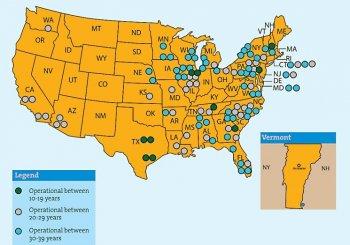BP’s lower marine riser package (LMRP) has placed a cap on the failed blow-out preventer, according to a White House brief.
LMRP, BP’s last ditch and most risky attempt at stopping the leak, siphons a portion of the leaking oil to the surface, but a large quantity of oil continues to run into the ocean.
According to BP, it is too early to release an estimate of exactly how much oil is being siphoned through the LMRP. In a teleconference on Friday afternoon, BP senior vice president Kent Wells said that BP will be releasing an estimate of how much oil has been siphoned through the LMRP every 24 hours, though the first estimate has yet to be released.
Calculations for the design of the LMRP were made using an estimated flow rate of 15,000 barrels a day.
The process works by first making a cut above the damaged point in the pipe to create a smooth incision. Then a new pipe is attached, which siphons the oil onto the surface. Risk of hydrate formation exist in this method. The mechanism has a methane-injecting feature, to counteract hydrate formation. Hydrate formation scuttled the first attempt to end the flow by capping it and siphoning oil to the surface.
Wells said, “At 12 hours into this, I’m not going to declare a success. I will say, though, that I’m encouraged.”
LMRP’s Progress, Pensacola’s Regress
The progress made with the LMRP came as the oil from the spill reached the beaches of Pensacola, Florida. While Deepwater Horizon reports from Thursday forecast no threats to Pensacola within the next 72 hours, a report released on Friday said, “Deepwater Horizon oil spill could impact the Florida Panhandle today due to a shift in winds and currents”. Reports now conclude that it has. NPR reported that tar balls were seen on the beach at Pensacola.
The toll on wildlife has been great. Rescue efforts for wild and marine life in the region are getting ramped up. Trained personnel are in short supply. The Deep Water Horizon Response team held a teleconference on how to clean oily birds on Friday afternoon.
National Oceanic and Atmospheric Administration (NOAA) said the primary oil plume is 17 miles away from Pensacola.
The Department of Commerce officially determined Florida is under a fishery failure on Friday in response to the Florida governor’s letter of request. The state’s emergency response operations center was also bumped up to “full” level, making it available for assistance from 9AM to 7PM.
BP Billed $69 million
Just before reports announcing LMRP’s success, the federal government sent a preliminary bill of $69.09 million to BP. The bill is requesting a payment into the Oil Spill Liability Trust Fund (OSLTF).



